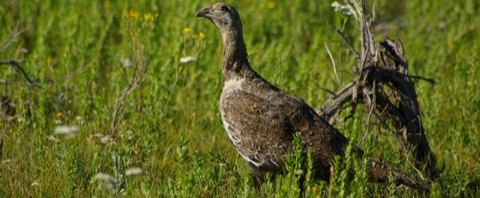-
With much fanfare, as reported in the Great Falls Tribune, the Montana Sage Grouse Oversight Team announced that it will bequeath more than $1.5 million for a 18,033-acre conservation easement on the 44 Ranch west of Winnett in Fergus and Petroleum Counties. Ostensibly, the state money, as well as additional private and federal government…
-
The Department of Interior recently released its Integrated Rangeland Fire Management Strategy whose goal is to reduce range fires in sagebrush ecosystems critical to sage grouse. The plan correctly identifies that cheatgrass is a major threat to the bird, as well as the sagebrush ecosystems. Cheatgrass is an exotic annual plant that greens up early,…
-
Here is a positive editorial authored by Ted Koch, US Fish and Wildlife Service Nevada Field Supervisor and signed by three other state US Fish and Wildlife Service managers that recently appeared in the Elko Daily Free Press apparently in response to an editorial I wrote about how livestock grazing was harmful to sage grouse…
-
An important study released today concludes that the presence of cattle in important sage grouse habitats increases the number of ravens that prey on sage grouse and their nests by 45.8% in the Curlew Valley of southeast Idaho. The study found that anthropogenic subsidies were increased in areas where livestock grazing occurred and raven populations increased…
-
Nature Notes: Explaining the new land rules. Elko Daily Free Press. Oct. 10, 2015 SNIP: “Well-managed livestock grazing is compatible with sage-grouse conservation. The plan amendment did not close any grazing allotments or cut any AUMs. During the 10-year grazing permit renewals, management objectives will be put in place to protect habitat and rangeland health…
-
With the recent decision not to list the Greater Sage Grouse under the Endangered Species Act (ESA), and given the overall weak measures in various Bureau of Land Management (BLM) and Forest Service (FS) conservation plans, it behooves activists to consider measures that will protect the sage grouse, and its habitat, along with the more…
-
The decision by the US Fish and Wildlife Service (FWS) not to list the Greater Sage Grouse under the Endangered Species Act (ESA) was an adroit dance of politics. The plan to “save’ the sage grouse has no clothes. The government proposed solution to the bird’s decline includes 14 new sage-grouse recovery plans—consolidated from 98…
-
Livestock grazing harm to the imperiled bird ignored- The U. S. Bureau of Land Management (BLM) and the U.S. Forest Service (USFS) just released the final environmental reviews for proposed land use plans. These, it says, “will help conserve greater sage-grouse habitat and support sustainable economic development on portions of public lands in 10 states across the…

